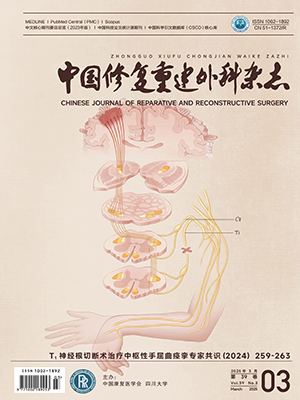To investigate the causes and the cl inical treatment methods of postoperative wound compl ications following total knee arthroplasty (TKA). Methods From June 2005 to August 2008, 486 cases (576 knees, including 314 left knees and 262 right knees) underwent primary TKA using standard midl ine incision and medial parapatellar arthrotomy. There were 146 males (172 knees) and 340 females (404 knees) aged 51-86 years old (average 61.3 years old). The duration of disease was 3-35 years. Primary diseases included: 138 cases (156 knees) of rheumatoid arthritis, 282 cases (348 knees) of osteoarthritis, 46 cases (49 knees) of traumatic arthritis, 20 cases (23 knees) of pigmented villonodular synovitis. The factors of etiology, deformity correction, duration of tourniquet use and wound drainage were analyzed to determine the cause of postoperative wound compl ication. Results Postoperatively, 37 cases (43 knees) had wound compl ications and the rate of incidence was 7.5%, including 13 cases (15 knees) of aseptic exudation, 3 cases (4 knees) of fat l iquefaction, 4 cases (4 knees) of subcutaneous hematoma, 8 cases (9 knees) of flap margin necrosis, 6 cases (7 knees) of superficial infection, 3 cases (4 knees) of red swollen joint with increased skin temperature and deep
infection. All 37 patients recoveried after symptomatic treatment. Among those 37 cases, patients with rheumatoid
arthritis had a higher incidence rate of wound compl ication than the patients with other primary diseases (P lt; 0.05). The
incidence rate of patients with deformity correction more than or equal to 20 degree was significantly higher than that of
other patients (P lt; 0.05). The duration of using tourniquet was (86 ± 15) minutes for patients with wound compl ication,
and (78 ± 8) minutes for patients without wound compl ication, indicating there was a significant difference (P lt; 0.01).
Wound compl ication occurred in 22 knees (5.1%) with autologous blood transfusion absorber, 11 knees (11.5%) with
negative pressure attraction, and 10 knees (19.2%) receiving no drainage. The incidence rate of postoperative wound
compl ication in patients without drainage was obviously higher than that in patients with drainage (P lt; 0.05). Conclusion
Patients with rheumatoid arthritis are more l ikely to have wound compl ication after TKA. Postoperative wound drainage and short duration of tourniquet appl ication help decrease the incidence of compl ications. It is necessary to make early definitive diagnosis of postoperative wound compl ication, and provide proactive treatment.
Citation: SUN Zhenhui,SUN Yunbo,CAO Jiangang,WANG Lei,TIAN Mengqiang,ZHANG Yu,LIU Jun,WANG Pei. CAUSE ANALYSIS AND CLINICAL MANAGEMENT OF POSTOPERATIVE WOUND COMPLICATIONS AFTER TOTAL KNEE ARTHROPLASTY. Chinese Journal of Reparative and Reconstructive Surgery, 2009, 23(6): 644-647. doi: Copy
Copyright © the editorial department of Chinese Journal of Reparative and Reconstructive Surgery of West China Medical Publisher. All rights reserved




